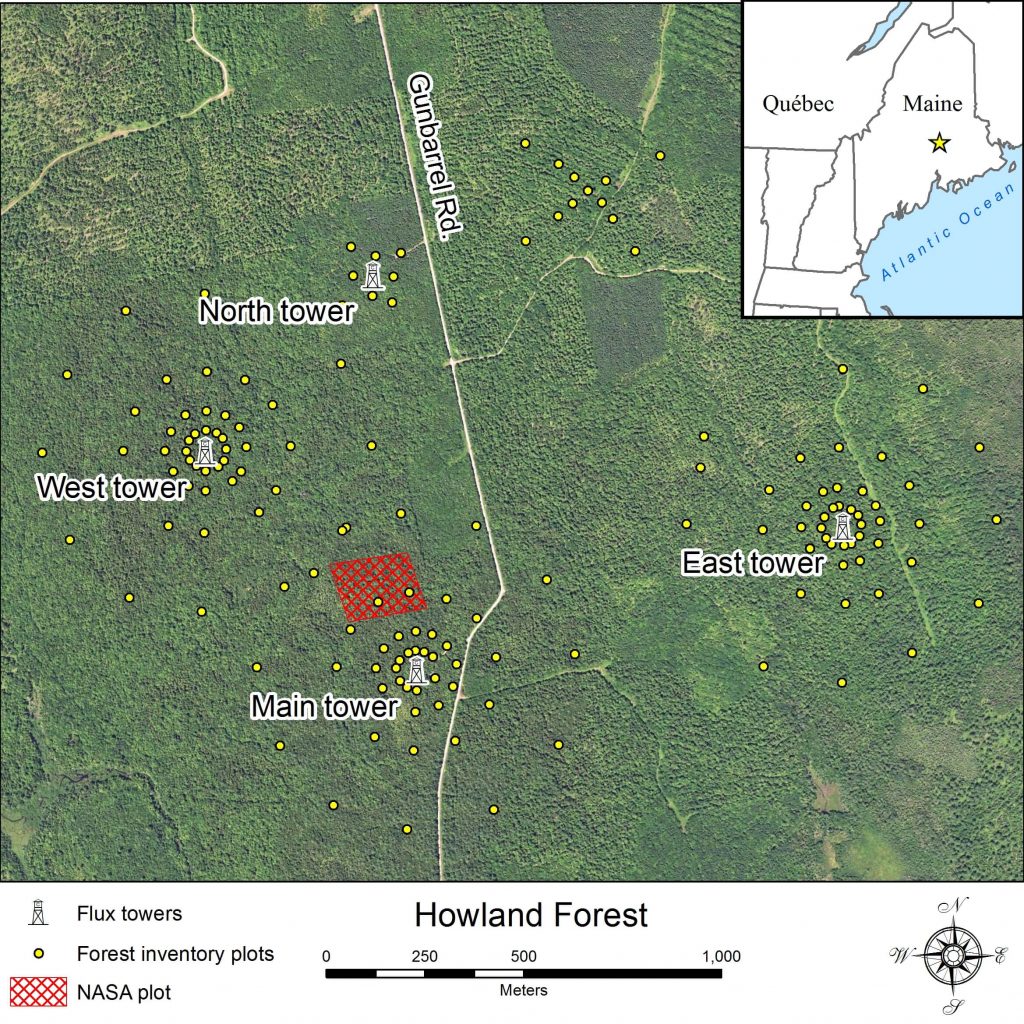About
Howland Research Forest is an AmeriFlux core site located in central Maine. The site was established in 1987 through a partnership between the University of Maine and International Paper. Collaborations between the USDA Forest Service, US Department of Energy, NASA, and the University of Maine have maintained an active research program focused on carbon and nutrient cycling. In 2007, the 220-hectare site was purchased and permanently protected by Northeast Wilderness Trust.
The site maintains three eddy flux towers; two towers (the “main” and “west” towers) are located in a mature spruce–hemlock forest approximately 800 meters apart. Howland has the second longest running flux record in the United States, dating back to 1996 (the longest belonging to Harvard Forest). These 20 years of data provide a time series long enough for robust analyses of relationships between CO2 flux and various environmental variables.
The Howland Research Forest is located in the transition zone between the eastern deciduous forest and the boreal forest in eastern North America. A mature multi-aged spruce–hemlock forest comprises approximately 170 of the 220 hectares owned by Northeast Wilderness Trust. The forest is dominated by red spruce (Picea rubens) and eastern hemlock (Tsuga canadensis), consisting of approximately 90% conifer, and 10% deciduous tree species.
The Research Team is collaboratively led by the University of Maine and the USDA Forest Service. Researchers from throughout the US work with the site to study carbon and nutrient cycling.
Forest Climate Change Series Features Howland
Webinar and field tour hosted by the Center for Research on Sustainable Forests focused on seminal forest research on atmospheric carbon and methane, forest ecology, soil health, and land conservation for forest research with panelists Shawn Fraver (UMaine PI), Dave Hollinger (USFS), Kathleen Savage (Woodwell Climate Research Center), and Jon Leibowitz (Northeast Wilderness Trust).
To learn more about the series and to access the Howland webinar video, visit FCCI Howland.

